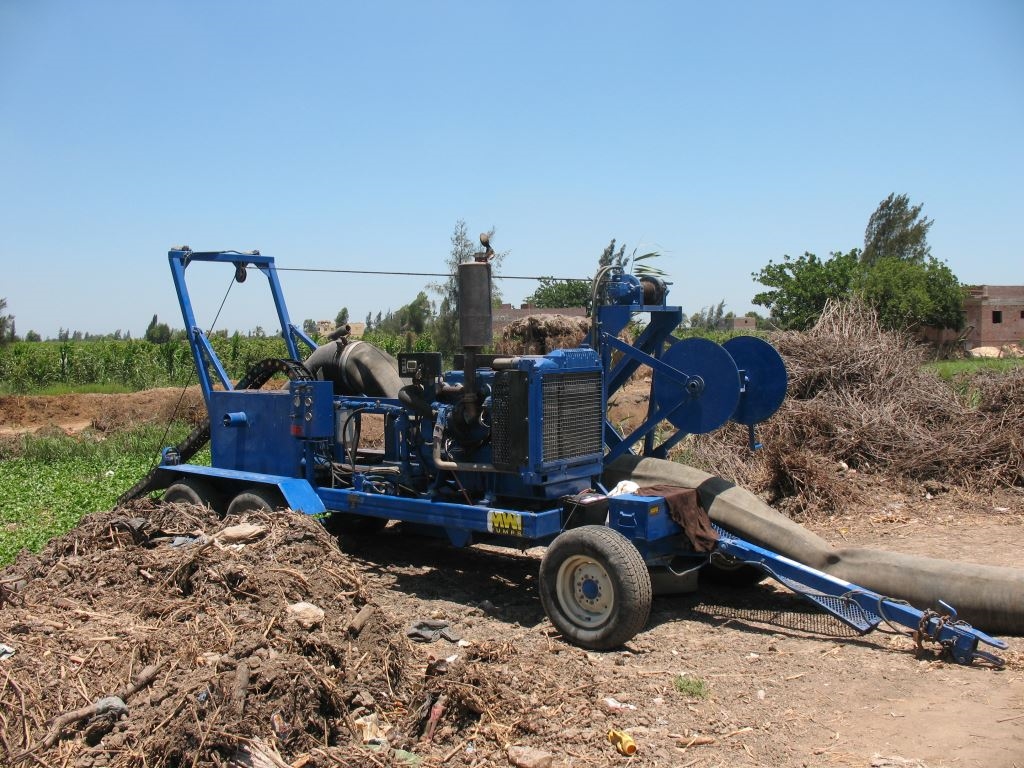Increasing Water Efficiency through Agricultural Drainage Water Reuse in the Nile Delta, Egypt

Introduction
Egypt faces the challenge of meeting an increasing demand for water due to high population growth with a limited volume of freshwater. The population, which is estimated to be 89 million in 2015, is expected to increase to 105 million in 2030 – a further 16 million people in 15 years who need to be supplied with water and food – and jobs.
The country relies on the Nile River as its main and almost exclusive source of fresh water. The Nile valley and the Nile Delta are the most important agricultural production areas and as such, population density is extremely high, estimated at 1,540 inhabitants per km² (2015). Farmers try to boost their production, but irrigation water is in short supply, mainly during the summer season. Climate change exacerbates the vulnerability that results from water scarcity. To overcome this problem, farmers often pump (polluted and lower quality) water directly from the agricultural drainage canals to irrigate their lands, unaware of potential harms.
In its National Climate Change Adaptation Strategy, Egypt identified the reuse of agricultural drainage water as one of its most promising options. The project outlined by this report* aims to improve the availability of its irrigation water, particularly during the summer, by mixing fresh irrigation water with drainage water under controlled conditions. The pilot measure by the GIZ regional programme: “Adaptation to Climate Change in the Water Sector in the MENA Region (ACCWaM)” was located in the Mahmoudia District of Beheira Governorate, was implemented via the delivery of a mobile pumping unit in July 2013.
The process is operated by the Ministry of Water Resources and Irrigation (MWRI) in partnership with the local water community. Special attention is given to the needs of women farmers.
*Download the full report from the right-hand column.
Read about other examples of climate change adaptation in the Middle East and North Africa (MENA) region in Bartels, M. & Prinz, D. (Eds.) (2016) ‘Coping with Water Scarcity under Changing Climatic Conditions: Best Practices and Innovations on Trial‘, available here.
Approach and context
The main objective of this pilot measure is the reuse of agricultural drainage water through the purchase and use of a mobile pumping unit to help the local community by mixing it with irrigation water during the period of high water demand [May – September]. Fortunately, in the pilot area available drainage water is not polluted by village or industrial effluents. The main crops are rice, wheat, maize, clover and vegetables.
The pilot covers an area of about 6,000 feddan (approx. 2520 ha), cultivated by 3,000 farmers and organised in three Water User Associations (WUAs). 30% of WUA members are women. In the Pilot Measure area, the farmers are constrained by a shortage of irrigation water, and, in response, drainage water is pumped for irrigation privately by local farmers. This increases potential for water quality problems (e.g. salinisation) and high energy consumption.
Key findings (abridged)
Some of the report’s key findings are summarised below:
- The controlled mixing of drainage water with fresh irrigation water through the pilot’s single mobile pump saves energy and reduces the cost to farmers who do not have to operate many individually-owned smaller and often inefficient pumps.
- In addition, regular water quality monitoring eases concerns over food safety.
- Increasing the discharge in the irrigation canals through reuse reduces farmers’ vulnerabilities and contributes to equity in allocation of irrigation water.
- A mobile pumping unit also has the advantage that it can serve those fields that suffer the most from irrigation water scarcity (e.g. at the tail end of a canal).
- The technical preconditions for the successful operation of the unit are:
- (a) a regular monitoring of the water quality;
- (b) protection of the drainage water from domestic and other pollution (including garbage disposal);
- (c) regular maintenance and uninterrupted energy supply of the pump; and
- (d) demand-driven operation and a steady, reliable water availability.
- The risks involved are the slow and gradual salinisation of the irrigated lands, an accumulation of hazardous chemical substances (if drainwater is polluted) and hygienic problems (if drainwater is contaminated with human excreta).
- Stakeholder involvement in the pilot area for decision making and the operation and maintenance of the mobile pumping unit is intensifying.
-
One important element is the fruitful and constructive partnership between MWRI and GIZ/ACCWaM through operational planning workshops. The experiences, benefits and impacts of the pilot measure are shared with water user associations, irrigators and focal groups.
-
Enabling Factors
Preconditions for the safe application using a mobile pumping unit are:
- existing legal framework and a strong partnership with the country’s water ministry;
- close partnership between national and local level water authorities, the beneficiaries and the funding;
- agency for the implementation, operation and maintenance of the system;
- an acceptable quality of drainage water plus an ample quantity of irrigation water;
- regular monitoring of water and soil quality, which demands adequate laboratory facilities; and
- training of farmers and pump operators.
Outcomes and Impacts
The achievements of the pilot measure in the Nile Delta are:
- Increasing the water supply
- Safeguarding the required level of water quality
- Improving water use efficiency
- Reducing energy consumption
Suggested citation
GIZ (2017). Increasing Water Efficiency through Agriculutural Drainage Reuse.
Further reading
GIZ: Resource-conserving Irrigation with Photovoltaic Pumping Systems, Chile
(0) Comments
There is no content